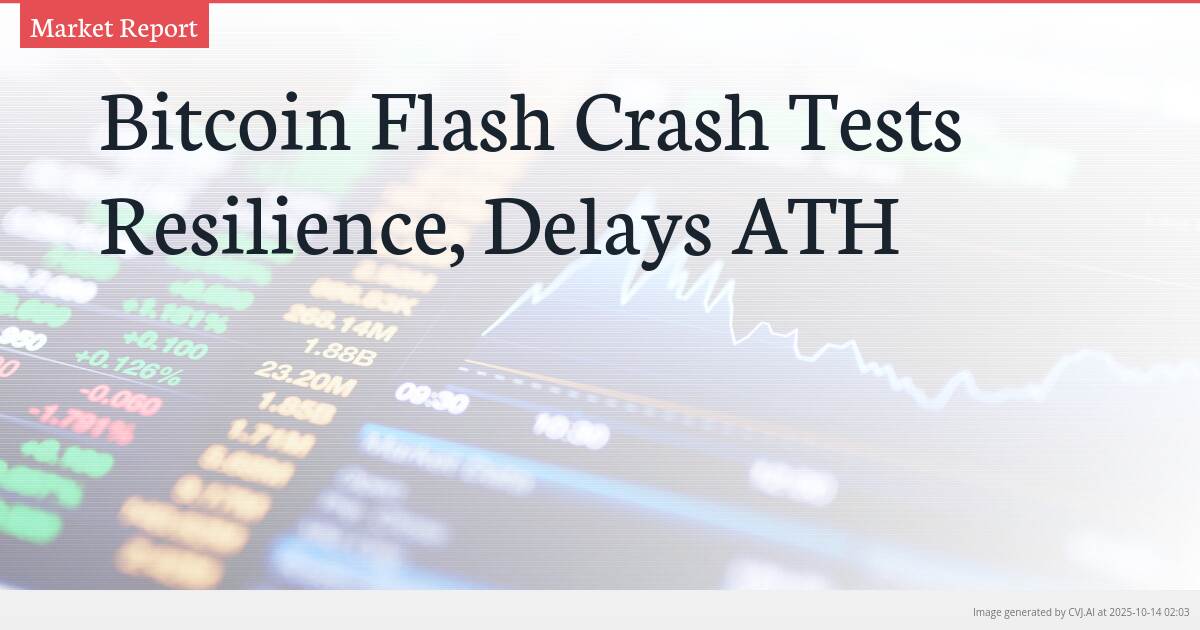This summary text is fully AI-generated and may therefore contain errors or be incomplete.
Introduction
Friday’s dramatic flash crash wiped out $19 billion from cryptocurrency markets, dampening short-term risk appetite among traders. Despite the sharp decline, analysts maintain that Bitcoin’s long-term fundamentals remain intact, though a new all-time high may now be delayed by weeks or months.
Key Points
- $19 billion market wipeout temporarily reduced trader risk appetite
- Long-term Bitcoin demand remains strong despite short-term volatility
- Negative funding rates and arbitrage signals indicate heightened counterparty risk
The $19 Billion Market Shock
The cryptocurrency market experienced a significant disruption on Friday as a flash crash erased approximately $19 billion in market value, creating immediate ripples across trading desks and investment portfolios. This sudden downward movement caught many market participants off guard, triggering a cascade of liquidations and forcing rapid reassessments of short-term trading strategies. The velocity of the decline highlighted the inherent volatility that continues to characterize digital asset markets, even as institutional adoption grows.
While the magnitude of the sell-off was substantial, market observers noted that Bitcoin’s recovery pattern following the initial shock demonstrated underlying strength. The cryptocurrency managed to stabilize at key support levels rather than continuing its descent, suggesting that buyers remained willing to step in during periods of distress. This behavior pattern aligns with historical precedents where sharp corrections were followed by consolidation phases before resuming upward trajectories.
Derivatives Market Signals Caution
In the aftermath of the flash crash, derivatives traders have adopted a notably more cautious stance, with market indicators pointing to heightened risk awareness. The emergence of negative funding rates across major exchanges signals that perpetual swap traders are predominantly positioned on the short side, paying funding to long positions. This market dynamic typically occurs when sentiment turns bearish in the short term, as traders seek protection against further downside or attempt to profit from continued weakness.
Simultaneously, arbitrage opportunities have widened significantly, reflecting market dislocation and increased counterparty risk concerns. The price discrepancies between spot markets and futures contracts, as well as across different trading venues, have created profitable opportunities for sophisticated market makers but also indicate fragmentation in market confidence. These conditions often precede periods of consolidation as the market works to find equilibrium between competing bullish and bearish forces.
The cautious posture among derivatives traders represents a marked shift from the aggressive positioning seen during previous market rallies. This recalibration of risk appetite suggests that market participants are now pricing in a higher probability of continued volatility, potentially delaying the timing of Bitcoin’s next assault on all-time highs as the market digests recent events and rebuilds confidence.
Long-Term Fundamentals Remain Intact
Despite the short-term turbulence and diminished risk appetite, analysts emphasize that Bitcoin’s long-term investment thesis remains fundamentally unchanged. The core drivers of adoption, including institutional interest, macroeconomic uncertainty, and the digital asset’s fixed supply schedule, continue to support the case for long-term price appreciation. The flash crash, while dramatic in its immediate impact, represents a temporary setback rather than a structural shift in the cryptocurrency’s value proposition.
Historical analysis of Bitcoin’s price action reveals that similar sharp corrections have frequently occurred within broader bull markets, often serving to shake out weak hands and reset overextended leverage. The current market environment shares characteristics with previous cycles where temporary setbacks ultimately gave way to renewed upward momentum, though the timing of such recoveries remains uncertain. Market technicians suggest that the path to new all-time highs may now require several weeks or even months of base-building and confidence restoration.
The resilience demonstrated during the recovery phase following Friday’s crash provides evidence that underlying demand for Bitcoin exposure remains robust. Long-term holders have largely maintained their positions, viewing the volatility as characteristic of an emerging asset class rather than a reason to abandon their strategic allocations. This steadfastness among core believers suggests that while the journey to new highs may be delayed, the ultimate destination remains within reach as market conditions normalize and risk appetite gradually returns.
📎 Read the original article on cointelegraph.com

